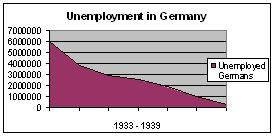Panic of 1797
1802–1804 recession
Depression of 1807
1812 recession
1815–21 depression
1822–1823 recession
1825–1826 recession
1828–1829 recession
1833–34 recession
US recessions, Free Banking Era to the Great Depression
1836–1838
late 1839–late 1843
1845–late 1846
1847–48 recession
1853–54 recession
1860–61 recession
1865–67 recession
1869–70 recession
Panic of 1873 and the Long Depression
1882–85 recession
1887–88 recession
1890–91 recession
Panic of 1893
1899–1900 recession
Panic of 1907
Panic of 1910–1911
Recession of 1913–1914
Post-World War I recession
Depression of 1920–21
1923–24 recession
1926–27 recession
The boom and bust cycle is not attributed to Keynes. Boom and Bust is simply inherent in capitalism. Keynes and state bureaucrats who had similar thoughts, simply believed they could organize a theory that understands why there are recessions and depressions. And instead of behaving like a Mormon by saying: "It's ok, this is how god intended". They would employ policies that would promote economic growth the same way you root out a cancer.
A classical economist or Austrians would choose to not give their children medication if they were sick because they would claim the medicine would make their children even more sick. Boom and Bust is natural. Let the market do its own work the same way you would let god fix the world's problems. And if god does not answer us, well, its no one's fault than the child's. Because he just was not strong enough thus does not deserve sympathy.
The Great depression was a severe depression that finally forced central governments to take action. They no longer just sat back and let the classical system do its own work. Its a real shame that the only way that most governments around the world could end the Great Depression was through war. That if it was argued that spending should be increased to improve social welfare, such a thought would be shot down. Instead, hundreds of billions of dollars (which was considered a lot back then, inflation adjusted) was injected into military spending to finally end the depression. Production that was not used to put smiles on people's faces but simply to hurt one another.
The Great Depression was a severe worldwide economic depression in the decade preceding World War II. The timing of the Great Depression varied across nations, but in most countries it started in about 1929 and lasted until the late 1930s or early 1940s.[1] It was the longest, most widespread, and deepest depression of the 20th century...
Some economies started to recover by the mid-1930s. However, in many countries the negative effects of the Great Depression lasted until the start of World War II.[8]
Sweden was the first country to come out of the great depression through deficit spending and operating a welfare state. Nazi Germany was the second country to come out of the great depression through deficit spending, social welfare, and military rearmament.
Sweden becomes the first nation to recover fully from the Great Depression. It has followed a policy of Keynesian deficit spending.
The economic policies of the Third Reich were in the beginning the brainchildren of Schacht, who assumed office as president of the central bank under Hitler in 1933, and became finance minister in the following year.[15] Schacht was one of the few finance ministers to take advantage of the freedom provided by the end of the gold standard to keep interest rates low and government budget deficits high, with massive public works funded by large budget deficits.[15] The consequence was an extremely rapid decline in unemployment—the most rapid decline in unemployment in any country during the Great Depression.[15]
The massive rearmament policies leading up to World War II helped stimulate the economies of Europe in 1937–39. By 1937, unemployment in Britain had fallen to 1.5 million. The mobilization of manpower following the outbreak of war in 1939 finally ended unemployment.[49]
America's entry into the war in 1941 finally eliminated the last effects from the Great Depression and brought the unemployment rate down below 10%.[50]
Since I am an english speaker (random chance), I would not understand data written in other languages, but here is data relating to the united states.
United States Unemployment Rate
Year Rate
1920 5.2 %
1928 4.2
1930 8.7
1932 23.6
1934 21.7
1936 16.9
1938 19.0
1940 14.6
1942 4.7%
1944 1.2
1946 3.9
1948 3.8
1950 5.3
1952 3.0
1954 5.5
Unemployment rates and economic growth did not begin to slow down until the end of the war. Growth and low employment did not begin to resume until the Korean War. And when that war ended, unemployment slipped again.
This is not to imply the the second world war was a godsend. Because unfortunately, the government spending that helped end the Great Depression did not go to health care and education or consumer goods and services but was instead used to end millions of lives across the united states to Europe. People lived on ration tickets and soup kitchens. You are talking about ending unemployment and creating economic growth by sending out young men to die. It did not matter what the money was spent on. Millions of European and american young men could have been sent to the beaches of Brazil to just lay about. Instead of storming Normandy they could have stormed Copacabana to the horror of Brazilian locals. But that government spending was crucial. Without it, the Depression would not have ended.



No comments:
Post a Comment